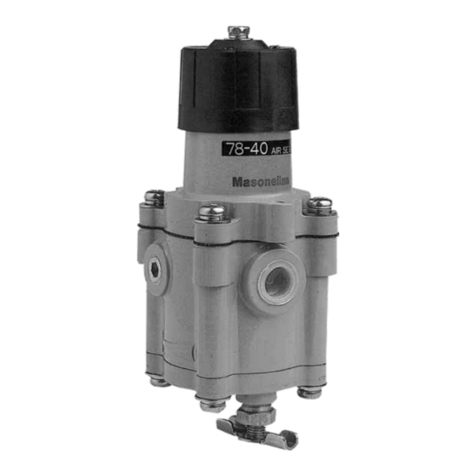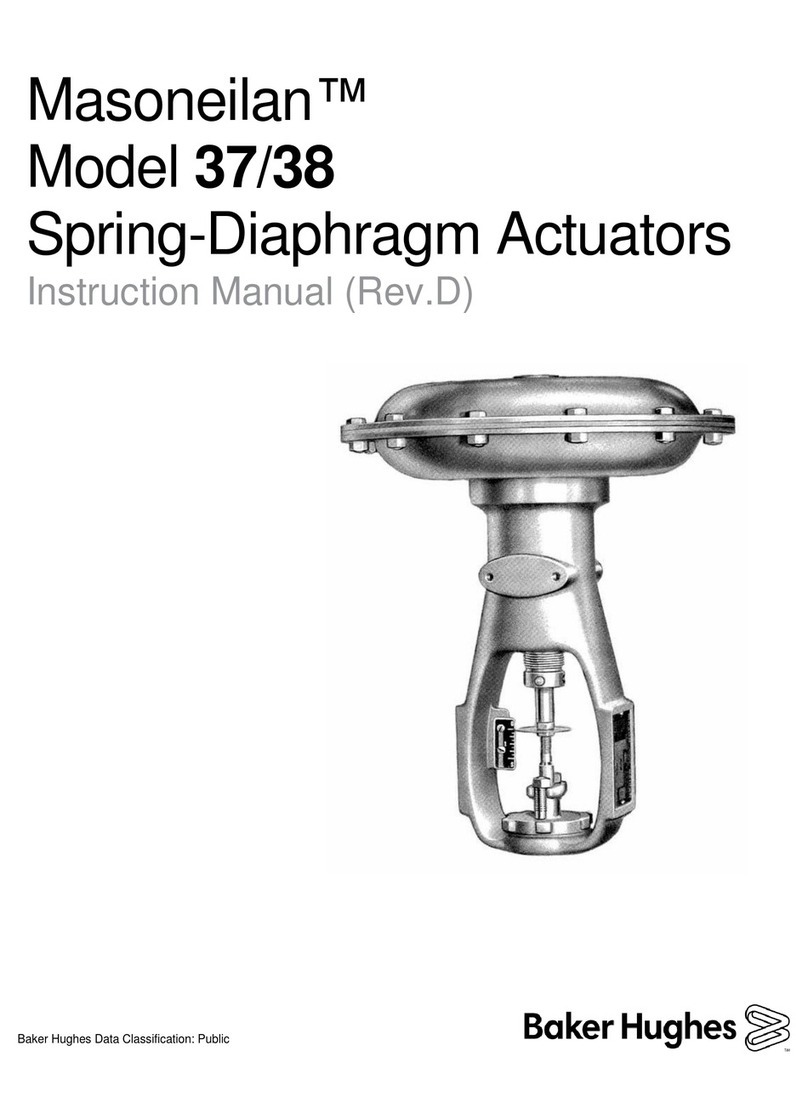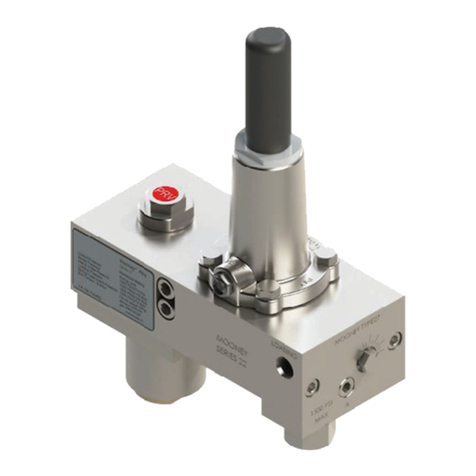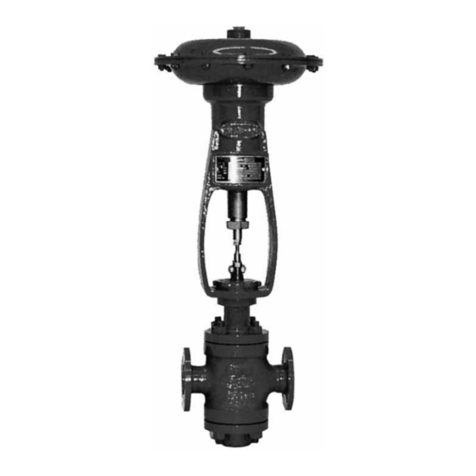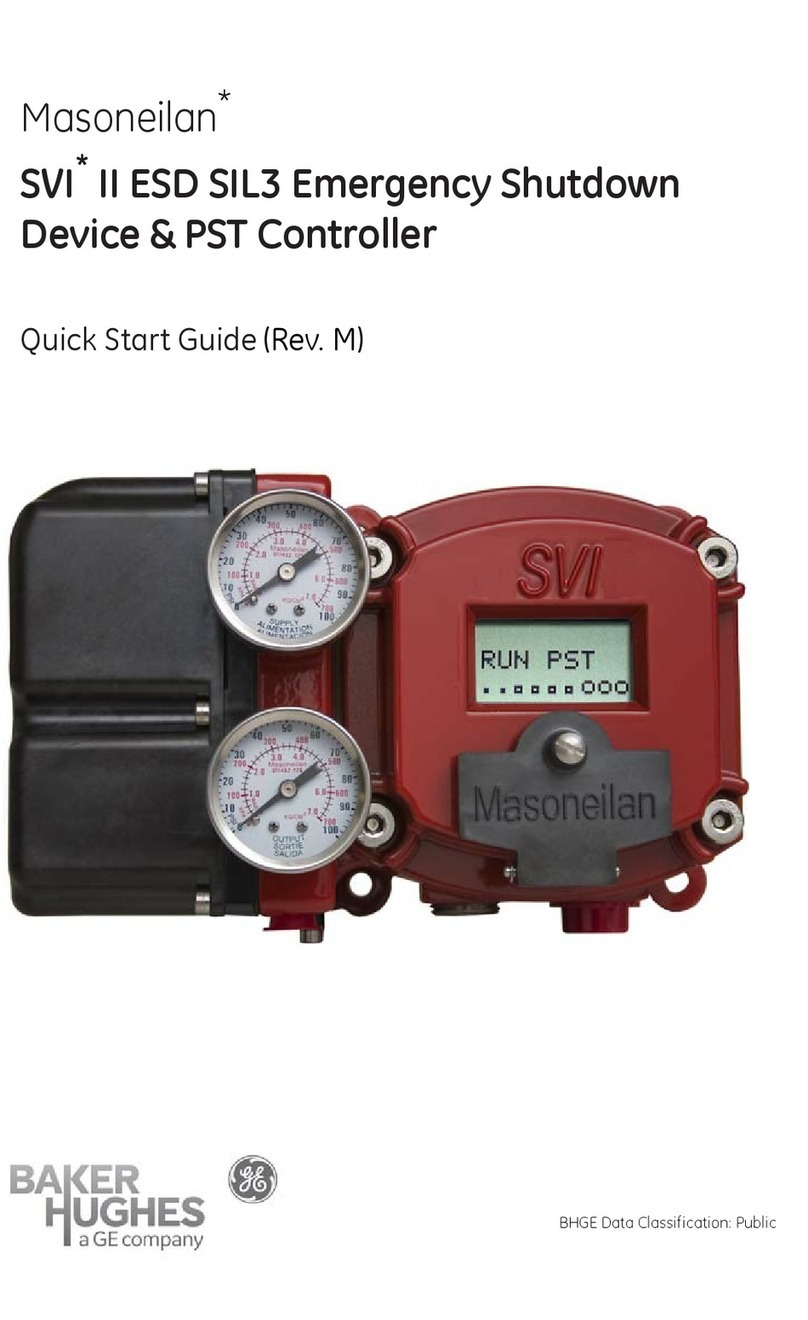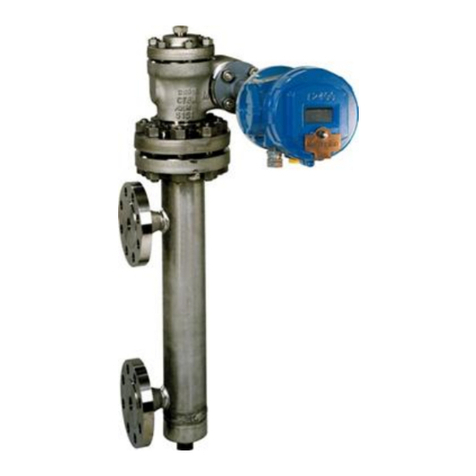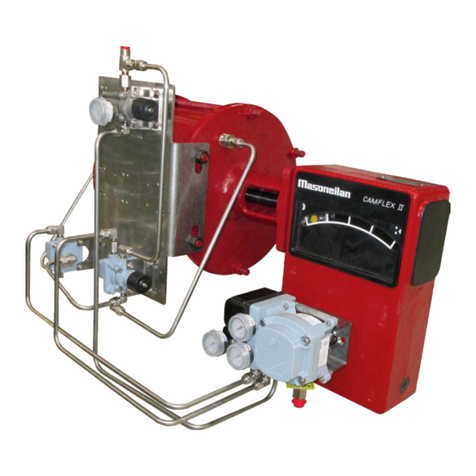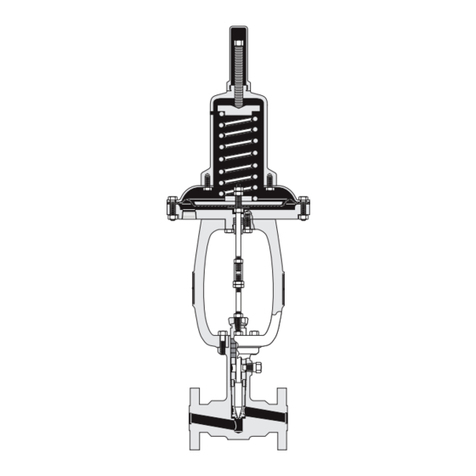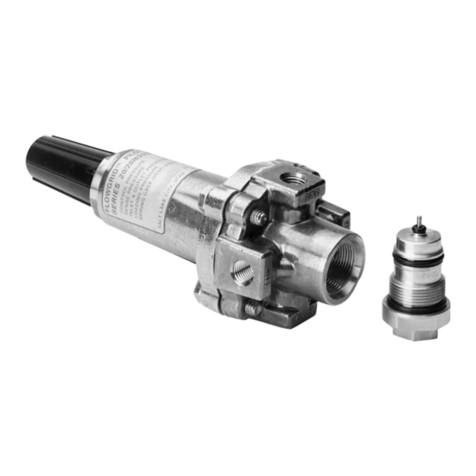
6 | Baker Hughes Copyright 2021 Baker Hughes Company. All rights reserved.
Installation
1. Personnel: Installation of the Flowgrid regulator should
be made by qualified personnel familiar with high pressure
piping and pilot operated regulators.
Personal injury, equipment damage, or leakage
due to explosion of accumulated gas or bursting of
pressure containing parts, may result if this regula-
tor is overpressured, or is installed where service
conditions could exceed the limits given in the
specication of this manual, or on the nameplate, or
where conditions exceed any ratings of the adjacent
piping or piping connections. Verify the limitations
of both regulator and pilot to ensure neither device
is overpressured. To avoid such injury or damage,
provide pressure relieving or pressure limiting
devices (as required by Title 49, Part 192, of the U.S.
code of Federal Regulations, by the National Fire
Codes of the National Fire Protection Association,
or applicable codes), to prevent service conditions
from exceeding those limits. Additionally, physical
damage to the regulator/regulator could break the
pilot off the main regulator, causing personal injury
and/or property damage due to explosion of ac-
cumulated gas. To avoid such injury and damage,
install the regulator in a safe location.
2. Prior Inspection: Inspect the main regulator, pilot, and
tubing for any damage that might have occurred in shipping.
Make sure the body, pilot lines, and inlet piping are clear
and free from foreign material.
3. Orientation: The Flowgrid regulator may be installed in any
position - the best position being one that provides easiest
access for pilot adjustment and regulator maintenance.
4. Lifting: Recommended lifting points are provided with each
Mooney Flowgrid regulator. A lifting bracket is included on
the spring case of the 1-2” regulators and two eye nuts on the
3-6” regulators.When lifting Mooney Flowgrid Regulators,
the following lifting guidelines are recommended:
• Always lift from both supplied lifting points (Sizes 3” and
larger) to ensure controlled and even lifting.
• A minimum sling angle of 60° shall be used for lifting. It
is recommended that a spreader bar be used to control
lift angle when possible.
• Never use a sling as a loop between two or more lifting
eyes.
• Always verify that lifting eye nuts are tightened until the
base is flush with the top of the hex nut prior to lifting.
• Never lift regulator assemblies by NPT ports in the
body or spring case.
• Never use accessories, accessory piping or fittings to
lift or support regulator assembly.
Flowgrid Regulators may require manual or assisted
lifting. It is the end user’s responsibility to ensure
the lifting means (product lifting points or equip-
ment) is properly installed, torqued, and inspected
for use in accordance with local codes and stan-
dards. Sizes above 3” in weight and assemblies
over 40 lbs, (18kg) require the use of another person
or equipment aided lifting. When lifting or moving
equipment suitable for an individual, added care
should be taken to prevent extended or strained mo-
tion and positioning.
5. Screwed End Regulators: Apply pipe compound to the
male threads starting one or two threads back from the end
prior to assembling the joint.
6. Flanged End Regulators: Use suitable line gaskets and
good bolting practices with flanged bodies. A crisscross
pattern of incrementally tightening the line bolts is
recommended.
7. Weld End Bodies: Remove the Spring Case and all trim
parts including diaphragm and O-rings before welding
a buttweld and/or a socket weld end Flowgrid regulator.
Electric arc welding is recommended to minimize heat build-
up on the body assembly. Reassemble regulator (refer to
the Maintenance section of this manual for Disassembly and
Assembly procedures) and pressurize with air to check for
leaks prior to putting the regulator in service.
Gas Regulators installed in conned or enclosed
spaces should be provided with adequate ventila-
tion to prevent the possibility of gas buildup or
accumula- tion from leaks and venting. Leaks or
vented gas may accumulate causing personal injury,
death, or property damage. Pilot spring cases and
the regulator enclosure should be vented to a safe
area away from air intakes, or any hazardous loca-
tion. The vent lines and stacks must be protected
against condensation and clogging.
8. Pilot Supply Lines: Run a 3/8” or 1/2”pilot supply line
from the regulator body connection on the inlet side of the
Flowgrid regulator to the pilot supply Filter or directly to the
pilot Restrictor.
Note: A shutoff regulator is not required in the supply
to the pilot, but if one is installed it should be a full
opening ball regulator type.
9. A Type 30 Filter in the pilot supply line is recommended
to clean dirt and other particulates that could affect the
restrictor or variable orifice in the pilot. Use a 1/4” nipple to
mount the filter to the body tap on the Flowgrid regulator.
10. Filter Outlet: Run 3/8” tubing or 1/4” pipe from the filter
OUTLET port to the INLET side of the restrictor in the pilot
system of the regulator. The TYPE 30/30A/30S FILTER
has two OUTLET ports for ease of tubing. Block the other
port with the plug provided or mount a gage to monitor inlet
pressure if desired.
